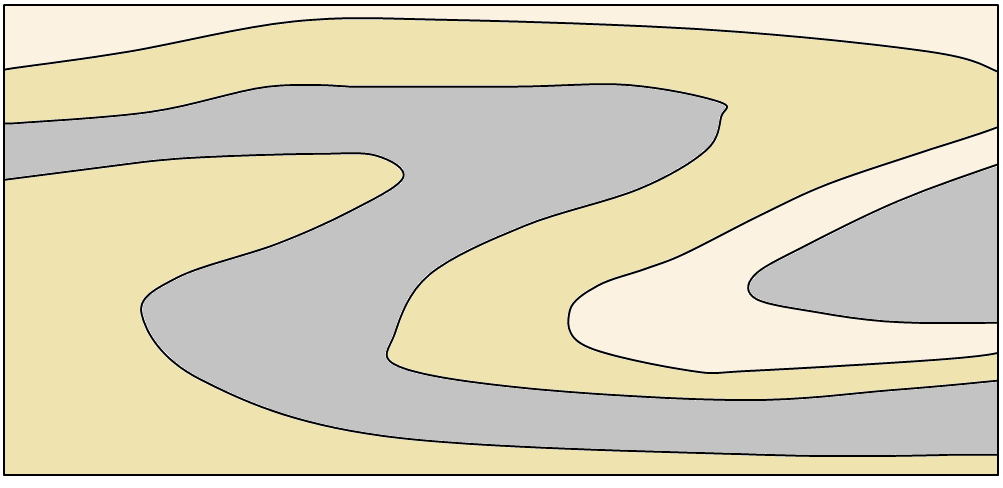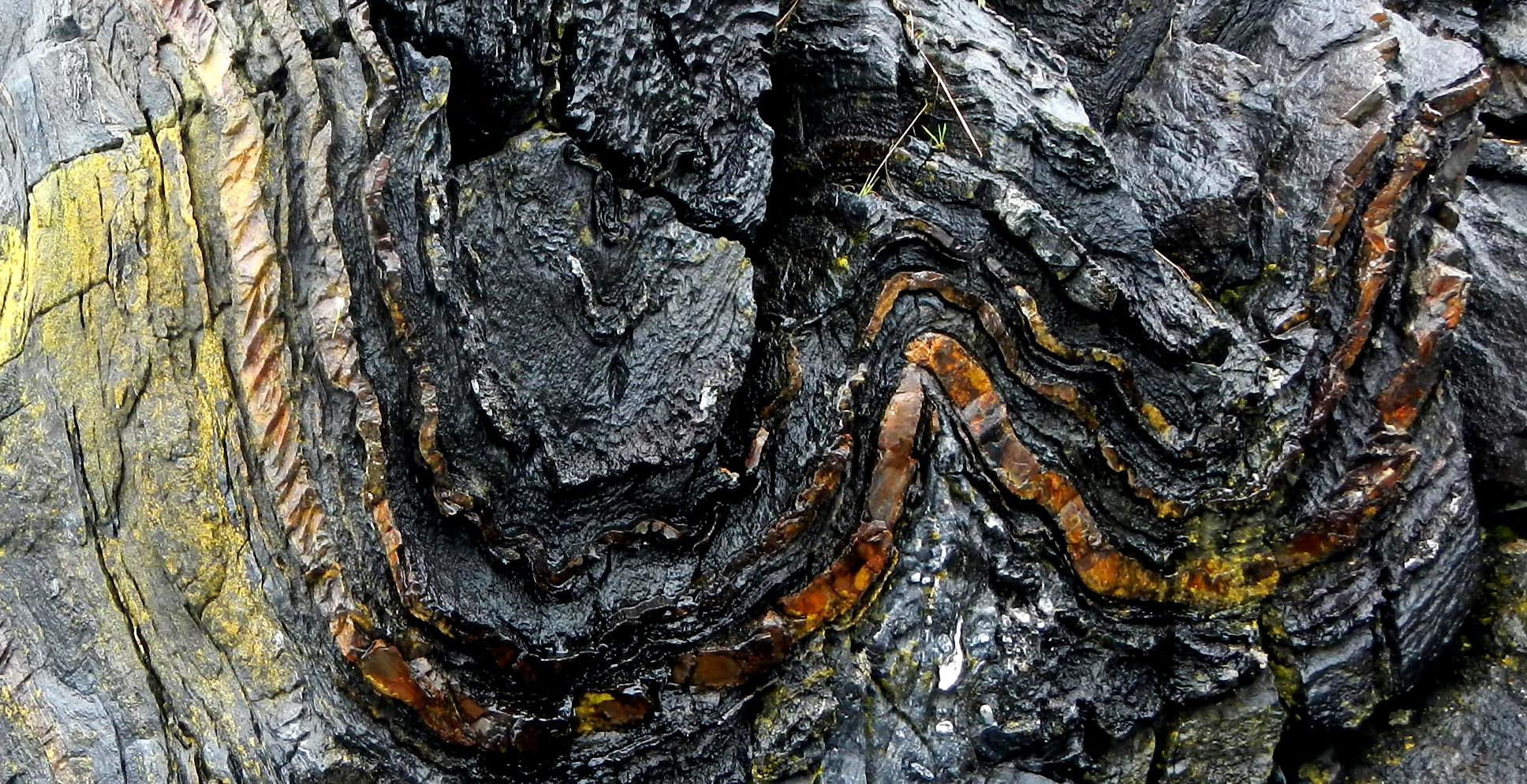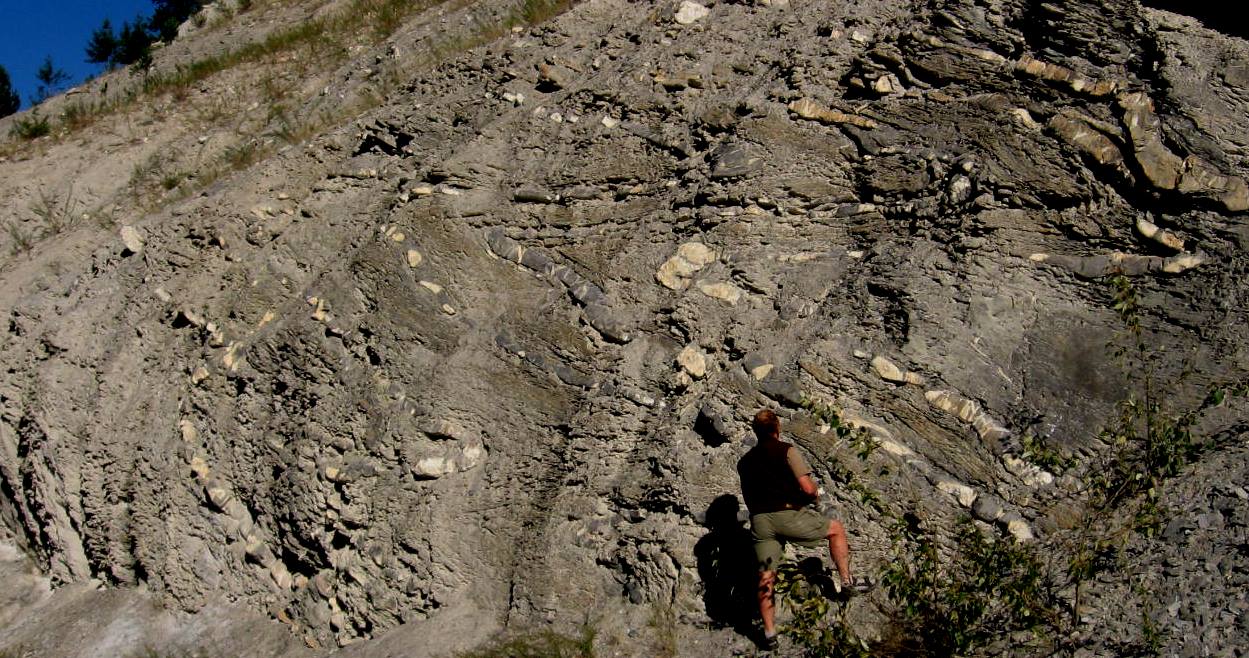Chapter 12 Geological Structures
12.2 Folding
When a body of rock, especially sedimentary rock, is squeezed from the sides by tectonic forces, it is likely to fracture and/or become faulted if it is cold and brittle, or become folded if it is warm enough to behave in a plastic manner.
The nomenclature and geometry of folds are summarized on Figure 12.2.1. An upward fold is called an anticline (or, more accurately, an antiform if we don’t know if the beds have been overturned or not), while a downward fold is called a syncline, (or a synform if we don’t if the beds have been overturned). In many areas it’s common to find a series of antiforms and synforms (as in Figure 12.5), although some sequences of rocks are folded into a single antiform or synform. A plane drawn through the crest of a fold in a series of beds is called the axial plane of the fold. The sloping beds on either side of an axial plane are limbs. An antiform or synform is described as symmetrical if the angles between each of limb and the axial plane are generally similar, and asymmetrical if they are not. If the axial plane is sufficiently tilted that the beds on one side have been tilted past vertical, the fold is known as an overturned antiform or synform.


A very tight fold, in which the limbs are parallel or nearly parallel to one another is called an isoclinal fold (Figure 12.2.2). Isoclinal folds that have been overturned to the extent that their limbs are nearly horizontal are called recumbent folds.
Folds can be of any size, and it’s very common to have smaller folds within larger folds (Figure 12.2.3). Large folds can have wavelengths of tens of kilometres, and very small ones might be visible only under a microscope.

Antiforms are not necessarily, or even typically, expressed as ridges in the terrain, nor synforms as valleys. Folded rocks get eroded just like all other rocks and the topography that results is typically controlled mostly by the resistance of different layers to erosion (Figure 12.2.4).

Exercise 12.1 Folding style
Figure 12.2.5 shows folding in the same area of the Rocky Mountains as Figure 12.0.1. Describe the types of folds using the appropriate terms from above (symmetrical, asymmetrical, isoclinal, overturned, recumbent etc.). You might find it useful to first sketch in the axial planes.

See Appendix 3 for Exercise 12.1 answers.
Media Attributions
- Figures 12.2.1, 12.2.2, 12.2.3, 12.2.4, 12.2.5: © Steven Earle. CC BY.
an upward fold where the beds are known not to be overturned
a downward fold where the beds are known not to be overturned
a plane that can be traced through all of the hinge lines of a fold
the layers of rock on either side of a fold
a fold in which the limbs are at the same angle to the hinge
in the context of folds, where the two sides of the fold make significantly different angles with respect to the axial plane
a geological feature that has been tilted to the point where it is upside down
a tight fold in which the limbs are parallel to each other
a fold that is overturned such that its limbs are close to horizontal

